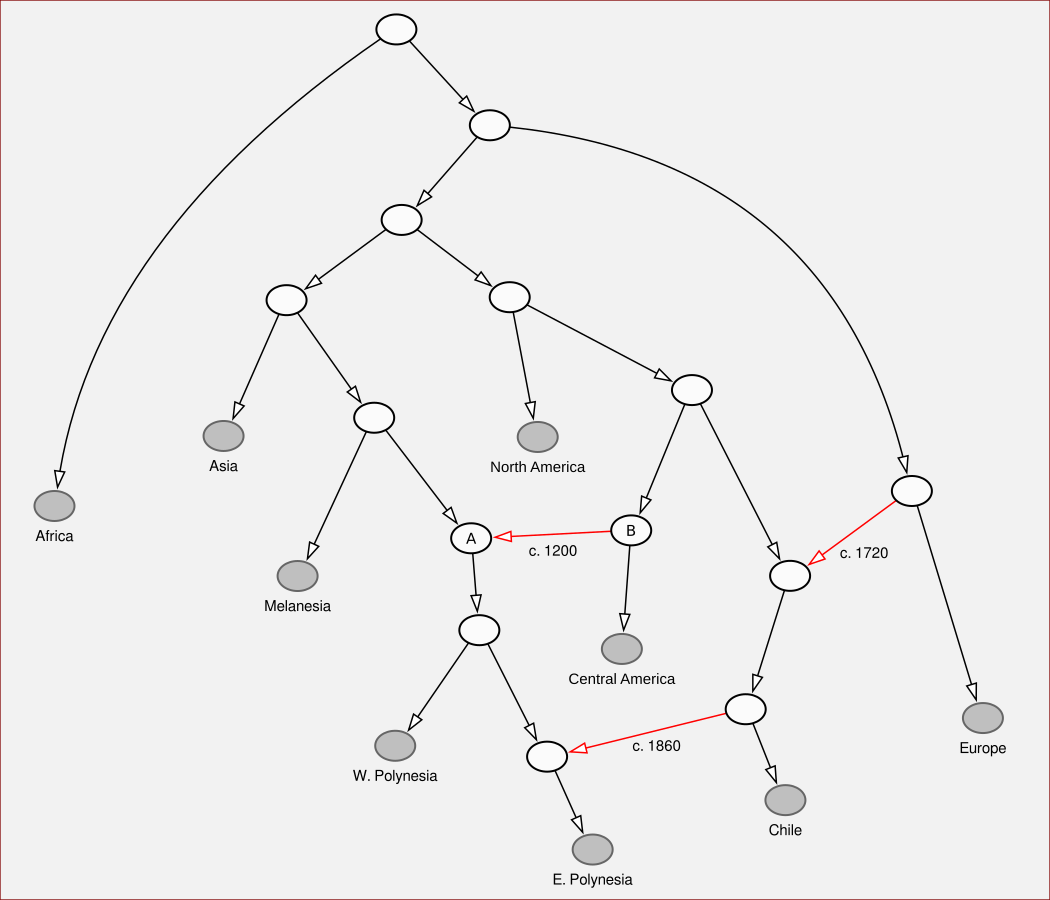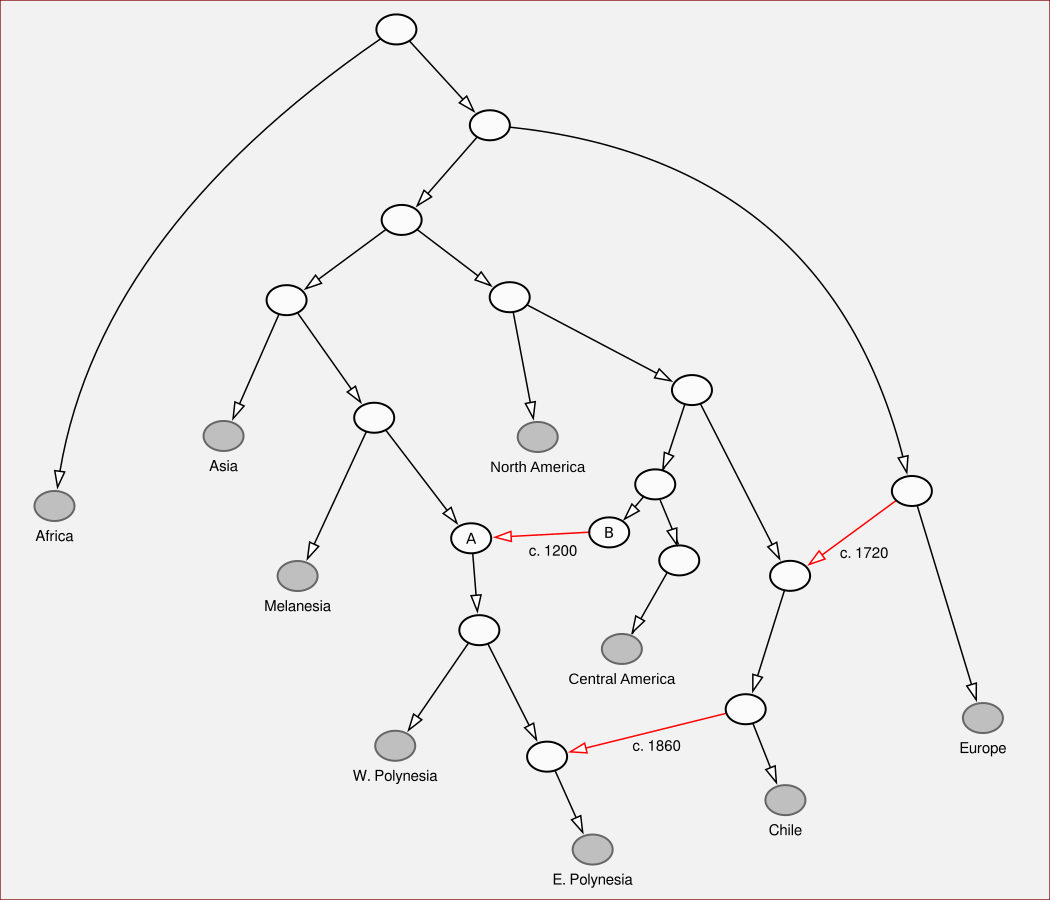Some thoughts on the recent paper about Polynesian ancestry by Ioannidis et al. (Long thread.) https://www.nature.com/articles/s41586-020-2487-2">https://www.nature.com/articles/...
The paper investigates ancestry in present-day Polynesians using genetic data from 354 individuals. Amongst other things, it finds a component of ancestry which is closer to that found in ancient and present-day Native Americans ..
than to any other sampled population worldwide, and which derives from an admixture event some 800 years ago. Specifically, they find that amongst the Native American populations they sampled, this component is closest to those in Central America.
The paper also has analyses of the genetic relationships between Polynesian islands, and later (C19th) gene flow from South America, which they relate to the events and legacy of European colonialism in the Pacific.
The authors discuss the implications of their results for our understanding of the history of these populations.
But before coming to that, I& #39;ll discuss the genetic analyses themselves. In short, I find this aspect of the paper convincing and strong.
But before coming to that, I& #39;ll discuss the genetic analyses themselves. In short, I find this aspect of the paper convincing and strong.
The signal of early admixture they find is clear, and they present several clever lines of supporting analysis. I& #39;d like to have seen more detail on their iterative ADMIXTURE procedure, e.g. what it does under different demographic scenarios, ..
but I get the idea, and the results don& #39;t rest on this alone. Given the high variance of the ancestral genetic process, I& #39;d also like to have seen some estimates of uncertainly in the admixture dates from their tracts analysis, perhaps based on resampling.
I& #39;m not sure all the differences they discuss are entirely significant. However I am persuaded that the key admixture event occurred and was indeed significantly earlier than the advent of Europeans in the Pacific, which is the main point.
One interpretation might be that around 1200 AD there was contact between the ancestors of present-day Polynesians and Native Americans. Where this occurred, in South America, Polynesia or elsewhere, or across a wide region, is not something these data can tell us.
However there are also other possibilities, and even this scenario is not quite what many reports have made it sound. For example, the study does not show or argue that the peoples involved in admixture 800 yrs ago were the specific indigenous groups included in the analysis.
The difficulty in conveying the results of genetic analyses in a way that researchers in different fields can understand and integrate with other forms of evidence, is not unique to this paper. Often, much of the problem lies with the summary figures we make, ..
which mix together results and interpretation, giving e.g. migration routes and barriers rather than genetic relationships. That isn& #39;t the case here. However, while Fig 4 is nice, I don& #39;t think it conveys the nature of what is inferred about the ancestral admixture.
For me what& #39;s missing is something along the lines of an admixture graph, like the one I have sketched here, where filled nodes represent sampled populations in the regions indicated.
Now, I& #39;m not saying this isn& #39;t open to misinterpretation: one could certainly argue with my labels, there is plenty of gene flow it ignores and I may have the structure wrong. And it& #39;s not at all clear what the open nodes are supposed to be - are they historical populations?
But then, that& #39;s sort of the point: we don& #39;t really know. What we infer is a (partial) topology of genetic relationships, and only further evidence can establish what e.g. nodes A and B are and where the connections occurred. Genetic evidence doesn& #39;t give us an ancient map.
Note also that many other models are equally consistent with the inferred relationships, such as this one, where the admixture doesn& #39;t involve the direct ancestors of present-day Native Americans ..
and there are other genetic data analyses which might help tease them apart, or shed greater light on the relationships to other related groups. Historical DNA from these regions could be particularly informative.
In essence though, I would like to see an attempt to summarise the genetic findings before going on to the speculative interpretations, making a clear distinction between the two. There& #39;s nothing wrong with a bit of speculation - it& #39;s important in fact.
Being more critical however, the discussion here does flit across such a variety of evidence, some scholarly and some less so (such as Heyerdahl& #39;s 1947 Kon Tiki voyage), that it does start to feel a bit History Channel :). Certainly guaranteed to wind up anthropologists..
It& #39;s very understandable, and unfortunate, that some people reacted more to that than to what should be the substance of the paper, because there is a lot which this analysis does very well. Some fascinating evidence, and prospects for exciting further research.

 Read on Twitter
Read on Twitter




